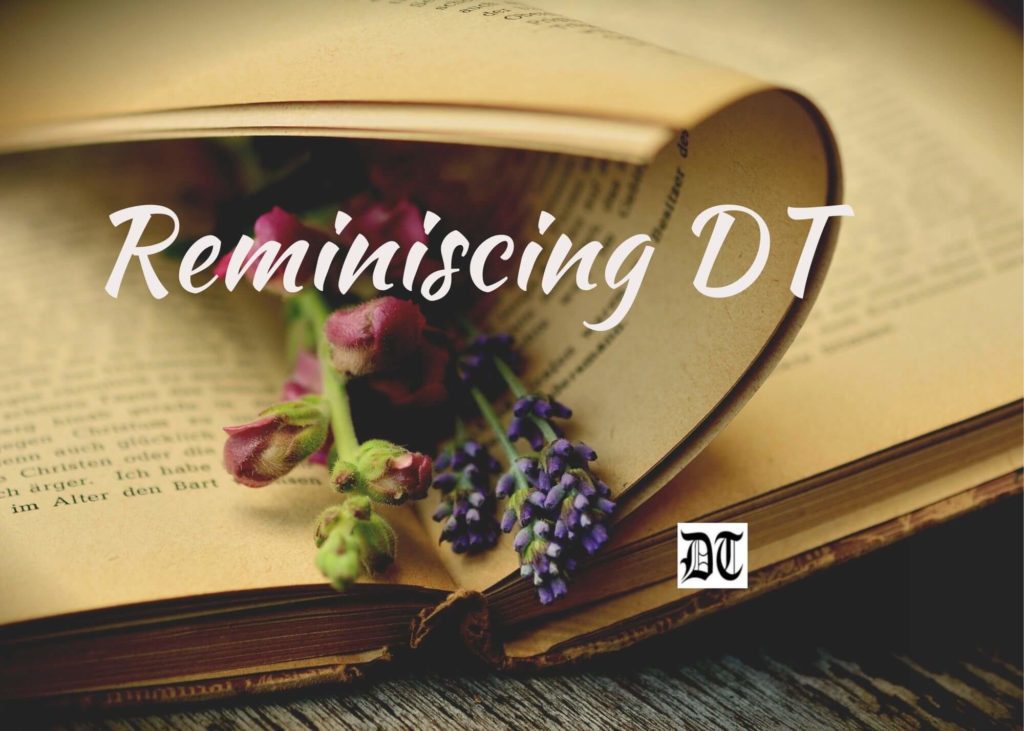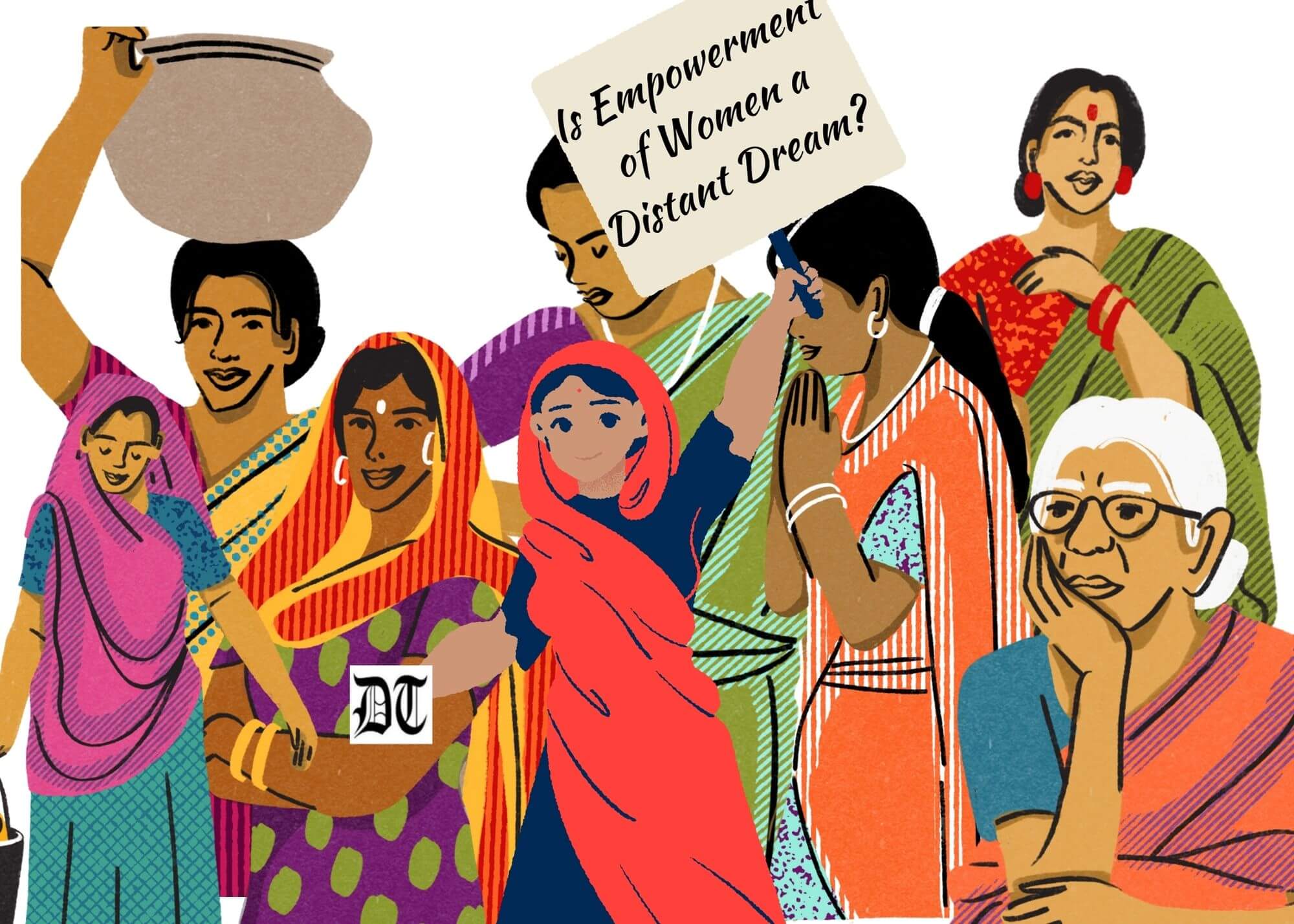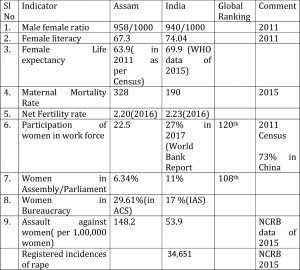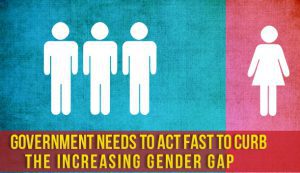Women roughly constitute half the population but in every aspect women still remain grossly under-represented. Certainly, the women in the largest democracy of the world are ranked much below top hundred in the global ranking. Hemashri examines the issue of women empowerment, basis several indicators, as part of the Special Feature, exclusively for Different Truths.

A working woman is considered to be the ultimate symbol of women empowerment. But, is she really empowered?
If a woman is working is that a guarantee that she is empowered? What are the elements of women empowerment?
Women empowerment is giving power to women. It is making the women better off by lending them a voice. And a will of their own. It enables a greater degree of self-confidence and a sense of independence among the women. The infographic describes the essence of women empowerment.
Does a woman going to work means that she has a safe and comfortable working environment? Doesn’t it mean that she has equal rights for economic and social justice? Can she make her own choice and decision? Does she have equal rights to participate in social, religious and public activities? Finally, can she live her life with a sense of self-worth, respect and dignity?
Women empowerment refers to the strengthening the social, economic and educational powers of women. It refers to an environment where there is no gender bias/discrimination and that they have equal rights in community, society, and workplaces.
Experts have developed various indicators to measure women empowerment. Basically, the condition of women might be assessed by indicators showing their health status, economic, educational attainment, and representation of women in government, parliament, media, a higher level of academic circle, and other areas.
United Nations Development Programme (UNDP) started measuring gender empowerment measure since 1995. It took into account three basic dimensions of empowerment:
1. Economic participation and decision making
2. Political participation and decision making
3. Power over economic resources
Consequently, several other indicators were developed i.e., Gender Equity Index (GEI) since 2007. It is meant to measure the gap between men and women in 150 countries based on dimensions of education, economic activity, and empowerment.
The Gender Development Index (GDI) is an index designed to measure gender equality. GDI together with the Gender Empowerment Measure (GEM) were introduced in 1995 in the Human Development Report written by the United Nations Development Program. Gender Inequality Index was introduced in the
Human Development Index. Global Gender Gap is designed to measure gender equality and was first published in 2006 by World Economic Forum.
India ranks 125 in Gender Equity Index. It is 87 th in Gender Gap Index and 108 th in Global Gender Gap estimated by World Economic Forum.
The statistics above clearly show that there is much to do to empower women in the true sense. Women roughly constitute half the population but in every aspect women still remain grossly under-represented. Certainly, the women in the largest democracy of the world is ranked much below top hundred in the global ranking. For example, women’s participation in the workplace; only 27% of Indian women are
engaged in the labour force, which means that 73 % of women are economically dependent.
Crime against women start before the birth of a girl in the form of female foeticide. After birth anything can happen from child marriage, honour killing, acid attack, molestation, rape, dowry death domestic violence, marital rape, gang rape, trafficking and forced prostitution. Twenty-one dowry deaths are reported across the country every day, but the conviction rate is only 34.7 per cent. The National Crime
Records Bureau (NCRB) states that in 2015, as many as 7,634 women died in the country due to dowry harassment. Either they were burnt alive or forced to commit suicide over dowry demand.
India is inhabited by a dominant Hindu population where deities are worshipped in the form of goddesses. Is it not shameful that the country known for being the oldest civilisation is where women are still enduring all kinds of violence?
When it comes to Global Gender Gap, neighbouring countries China and Bangladesh are ranked above India due to the high participation of women in economic activity.
Thus, a working woman is just the tip of the iceberg. It may be taken as positive change but a lot remains to be done. Even those who work often have to endure very adverse situation ranging from the adverse working atmosphere, unshared family and household responsibilities that stress out a working woman creating severe mental,
physical, and health issues.
The need of the hour is the change of mindset to break age-old adverse family and social customs that demean women as inferior along with the spread of education, skill, improvement of social atmosphere to promote safety of women, an efficient and effective judicial and executive to enforce rules and laws, political empowerment of women and so on.
A few women seen at the workplaces is not enough!
Char and infographic from the Internet and images designed by Anumita Roy, Different Truths








 By
By
 By
By
VERY WELL WRITTEN
A very important issue concerning 50% of our society..very well highlighted supported by statistical datas..👏👏